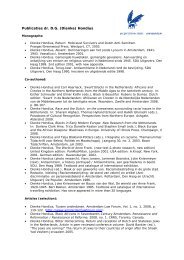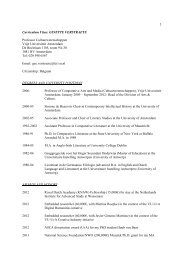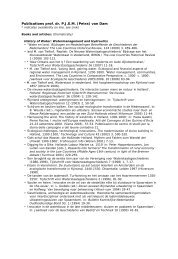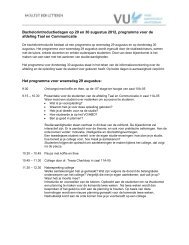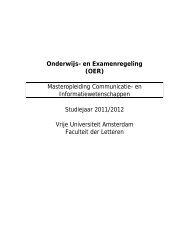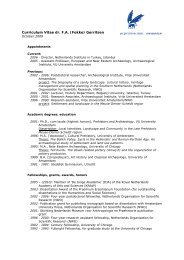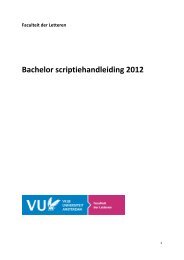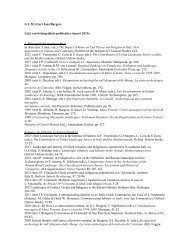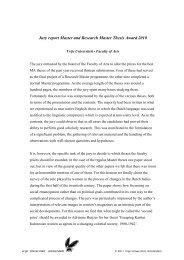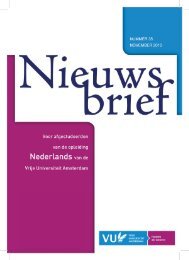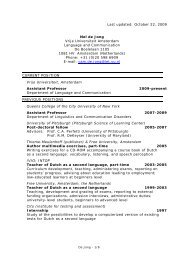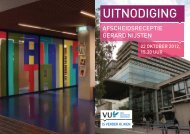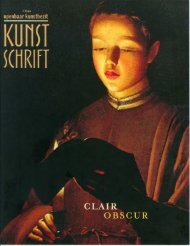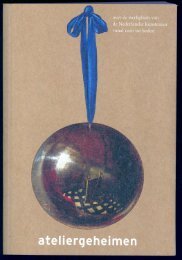You also want an ePaper? Increase the reach of your titles
YUMPU automatically turns print PDFs into web optimized ePapers that Google loves.
6. Wassily Kandinsky,<br />
Improvhatlon Deluge<br />
(Large Studyfor<br />
Composilion VI),<br />
1913, oilon canvas,<br />
95 x 150 cm,<br />
Stadtische Galerie<br />
ini Lenbachhaus,<br />
Munich.<br />
we find the most likely candidate for Kandinsky's final vïsual source —<br />
namely, the volume devoted to the deluge and storm drawïngs.35<br />
The title of Rouveyre's volume is Études et dessins sur l'atmosphère. The term<br />
'atmosphere' was already used in 1899 by Müntz to characterize Leonardo's<br />
drawings of the deluge and storms and it was therefore also adoptcd by<br />
Pcladan in 1910. Tt is remarkable that the same term often turns up in<br />
Kandinsky's Überdas Geisiigewho uses it to refer to the invisible realm of<br />
inner thoughts and emotions.36 As already said, Kandinsky thought hè<br />
owed it to his own time and to posterity to depict this spiritual atmosphere<br />
in a non-figurative way, thus abandoning the Renaissance tradition of<br />
which Lconardo was such an outstanding representative. The important<br />
thing to stress however is that: in comparison with his written texts, Leonardo's<br />
own drawings seem to testify ro a quite different, almost non-Renaissance<br />
approach towards the dcpiction of storms and the deluge (fig. 5).<br />
It is as if decorative patterns prevail in them over narrative details, making<br />
these drawings look like further evidence to support the notion that hè was<br />
an avant-garde artist long before this term was devised. In 1903, for example,<br />
Bernard Berenson dcscribed them as being full of'poetic force and<br />
decorative beauty'.37 Kandinsky himsclf must have seen them as the expression<br />
of a kindred artist, one who was concerned above all with the<br />
composition of abstract patterns of repetitive and parallel curving Unes and<br />
of overlapping or juxtaposed amorphous forms, rather than with creating<br />
illusions. This must surely have been the decisive reason for him to embrace<br />
Leonardo's drawings with such fervour.<br />
464 Paul van den Akker



